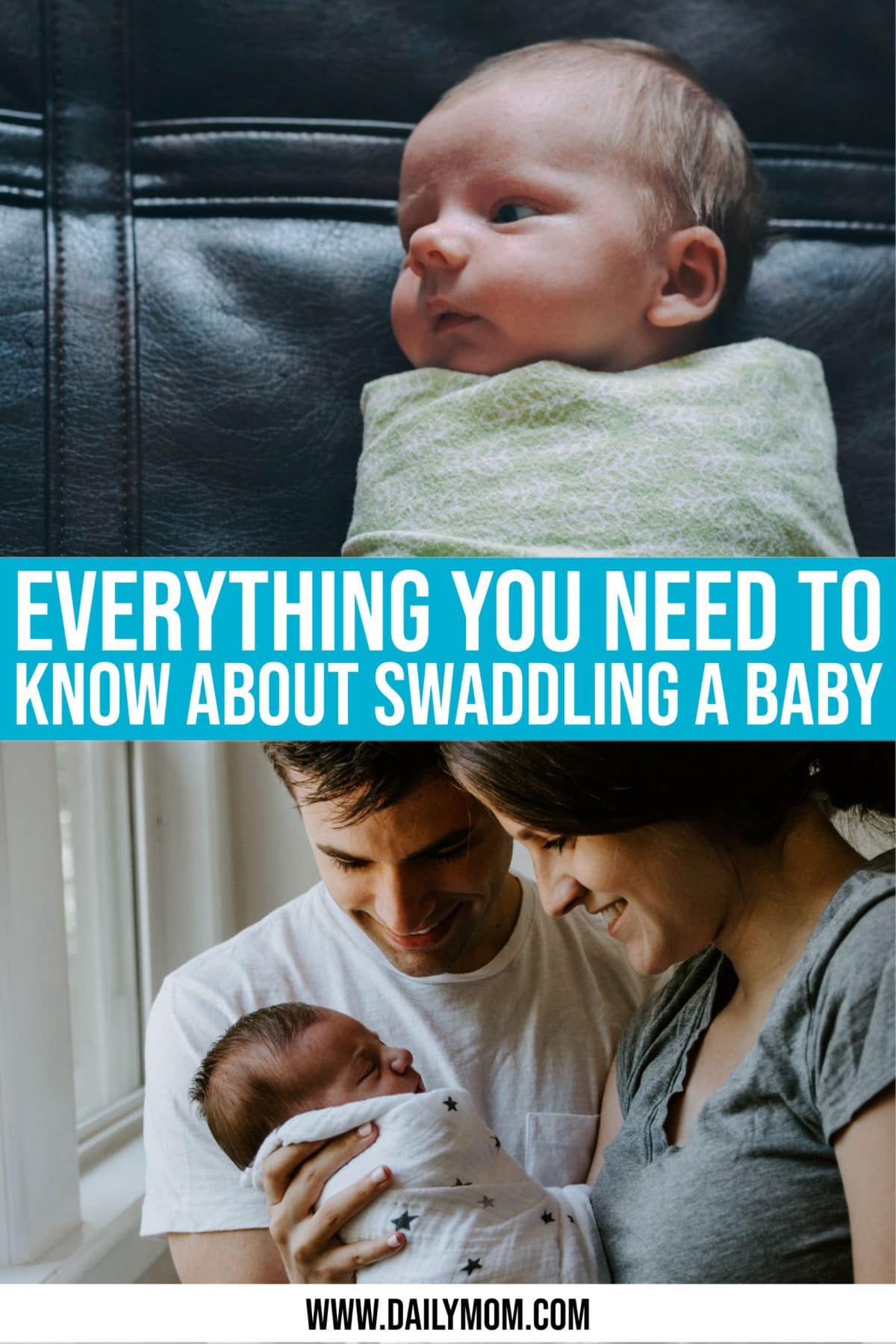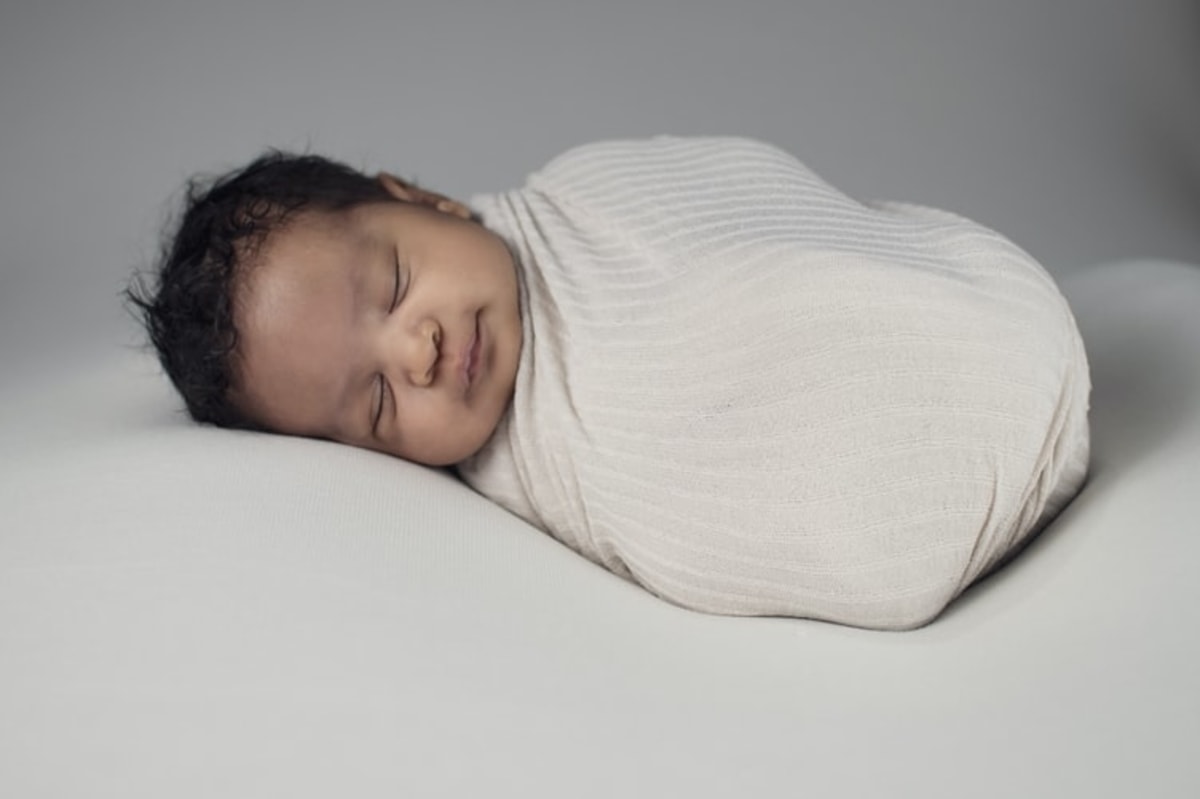Every new parent is familiar with the fear of doing something wrong and questioning every choice you make. For instance, just because you think you are supposed to be swaddling a baby, should you? Then there is the question of how to swaddle – is there some special technique or do you just wrap up the baby in a baby blanket and call it a day? When should you be swaddling a baby and how long? Have no fear. Here is your guide to everything you need to know about swaddling a baby.
Why You Should Be Swaddling a Baby
Everyone assumes you are supposed to swaddle a newborn baby. But not everyone knows why exactly. Cultures all over the world swaddle babies and have been swaddling babies forever. There are depictions of swaddled babies from Ancient Greece and Rome. It is even mentioned in the Bible when Jesus is born in the manger. In Biblical times, babies were wrapped in cloth to keep them warm, and because they believed it would help their limbs grow straight. American Indians would swaddle babies so that they could carry them around while traveling.

In the 17th and 18th Centuries, babies were swaddled by wetnurses to prevent them from moving because they could be swaddled and left virtually uncared for – although this practice came to be seen as cruel and fell out of favor.
Swaddling a baby helps them feel safe and secure. After all, they are used to swimming around in the nice warm world of their mother’s womb and are new to this outside world business. Swaddling helps keep them warm until their internal thermostat kicks in and the baby’s body can regulate its own temperature. Swaddling often helps babies sleep better since they feel secure and warm.
Swaddling a baby can also prevent them from flailing their arms and legs, which can trigger their startle reflex. A baby’s startle reflex only lasts for the first few months of their life, but it can cause them to get upset and cry because they feel (like the name implies) startled.
It has been shown that swaddling can be particularly helpful for babies with neurologic problems, colic, and for babies born addicted to drugs.
When to Swaddle and for How Long?
Swaddling should be saved for naptime and bedtime. Babies should not stay swaddled up all the time because it can decrease their arousal and it restricts their movement.

Swaddling a baby is best while they are still in the newborn phase, so from birth to around 2 months. It is best to stop at the first signs of baby trying to roll over, which usually happens when they are between 3 and 4 months old. At this stage, they could break free from their swaddle and get tangled up in the blanket.
Another reason swaddling a baby who is a little older is a bad idea is because it prevents them from arm and leg movement that is associated with age-appropriate motor skills. Even newborn babies need to be able to move their arms and legs as part of healthy development, which is why swaddling should be saved for when it is time to sleep.
Is Swaddling a Baby Safe?
The American Academy of Pediatrics says that when it is done correctly, swaddling a baby can be an effective way to calm infants and promote sleep. However, it is important to know that swaddling a baby does come with some risks, as does everything with children, but as long as parents are aware of the risks and follow safe sleep guidelines, baby should snooze safely and soundly.
For one, swaddling can decrease a baby’s arousal, making it harder for the baby to wake up. This is why swaddling is so popular – babies who are swaddled tend to sleep longer and do not wake as easily. As good as that sounds, the risk is that decreased arousal is not all a good thing. Babies need to be able to wake themselves if there is a problem. It is not certain, but decreased arousal may be one of the reasons babies die from Sudden Infant Death Syndrom (SIDS).

So babies who are swaddled need to be monitored, just like all sleeping babies, and should only be placed on their back to sleep. Babies should never be placed on their sides or stomach when sleeping, regardless of swaddling.
Another risk with swaddling comes with older babies. When babies start to become more active, they can loosen or break free from their blankets, which increases the risk of suffocation. This means that as soon as a baby starts to try breaking free from being swaddled or is in any way attempting to roll over, they should no longer be swaddled.
A less scary sounding risk that comes from swaddling a baby is that because it keeps their legs together and straight, swaddling can increase the risk of hip problems. Tightly wrapping a baby’s legs can lead to hip dislocation or hip dysplasia, which is another reason not to keep babies swaddled all the time. They should also be swaddled in a way that is not constrictive on the hips but that allows their legs to bend.
How to Swaddle a Baby
With all this information, swaddling a baby may seem scary or a little intimidating, but it really is not. In a few easy steps you will be a pro at swaddling.
- Spread out the blanket on a flat surface, positioned so it looks like a diamond. Fold down the top corner about six inches.
- Lay your baby face-up on the blanket so their head is off the blanket above the folded corner and their feet are pointed toward you.
- Straighten your baby’s left arm so it is laying down and wrap the left corner of the blanket over their left arm and chest. Tuck the corner under her right arm and the right side of her body. The left arm will now be covered, but the right arm will still be free.
- Fold the bottom corner of the blanket up over your baby’s body and tuck it under the first fold under their chin.
- Now lay your baby’s right arm down straight and fold the right corner of the blanket over their body and under their left side.
- Fold or twist the bottom of the blanket loosely and tuck it under your baby.
Make sure your baby’s hips can move and that the blanket is not too tight. You should to be able to get two or three fingers between the baby’s chest and the blanket.

It is true that not all babies like to be swaddled. Some babies absolutely hate it and will squirm their way free even in the newborn stage. That is okay. Babies, just like the rest of us, are not universal. Give swaddling a try a few times. Try swaddling them below their arms so that their arms stay out of the blanket. That gives them the warm wrapped up feeling of being swaddled but allows them some freedom of movement. But if your baby is not into it, then move on. There is nothing wrong with not swaddling your baby.
A swaddled newborn baby is the cutest thing. That is probably why most of the pictures introducing everyone’s newborns to the world are of their beautiful swaddled baby. Swaddling a baby is a good idea because it keeps them warm and makes them feel secure. As long as parents follow the safe sleep guidelines that all parents should follow regardless of whether or not their baby is swaddled, swaddling is a safe way to help baby sleep well.
WANT TO READ MORE?
Check out this article on How Long to Breastfeed Your New Baby.

Sources: How to Swaddle a Baby, Swaddling: Is it Safe?
Photo Credits: Unsplash.com










































